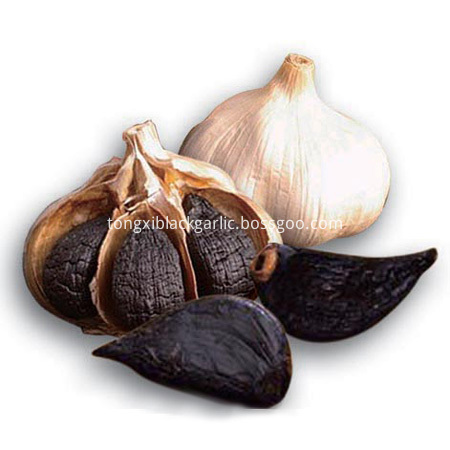Rice is the main grain crop in the Luan Lake and southwestern Luhu Lake. It has high yield and good commercial quality. However, due to the disorder of varieties and serious diseases in recent years, the income of rice farmers in the rice area has been affected. Therefore, we must implement various rice seedling raising techniques to lay a good foundation for the high yield and yield of rice.
First, choose high-quality varieties. Although Yuye No. 6 rice has poor disease resistance, but it has excellent quality, photosynthetic efficiency and compensation ability, and high yield, it should still be the head of the year. It can be used with planting Lindao 11, Zhendao 88, and demonstration planting Shengao 806 Depending on special needs or orders, special rice such as Shengdao 301, Xiangyu 9407, and glutinous rice may also be planted to meet market demand and increase farmers' income.
Second, deep-turning the field, drying earth live. The deep-turning sorghum in reserved paddy field is needed to improve soil physical properties in paddy fields, increase soil water storage, fertilizer storage, and fertilizer supply capacity, and improve disease resistance and resilience of seedlings, which has a very significant effect on cultivating strong scorpion fish.
Third, do a good job in seed processing. 1, drying species: before the fall valley about 10 days, choose sunny days 2 to 3 days, in order to increase the seed germination rate, germination potential. 2. Seed soaking: Use 10% soaking seed oil 2ml plus 5% fipronil 5 to 10ml water 6 to 8kg, soak 5kg, soak for 3 to 5 days, do not need to wash, so that can be effectively prevented Rice bakanae, dry-needle nematode disease, and early stage emergence of rice planthoppers.
Fourth, appropriate breeding, nurturing strong. In Lunan and southwestern Shandong rice regions, suitable breeding time is around May 1 and the suitable seedling age is about 45 days. All localities can rationally arrange the time for breeding according to the local transplanting schedule, not only to avoid short-term young seedlings, but also to avoid long-term old weak seedlings.
Rice seedlings due to dry seedlings have small seedlings, yellow-green leaves, and old plants, which can reduce the tropism of SBPH and have a strong anti-infective effect, which is of great importance in reducing the occurrence of rice stripe disease. There are many advantages such as “sowing land and planting seedlings, returning seedlings quickly, and easy survivalâ€. The villages where conditions permit should actively promote the development of dry rice seedlings.
Fifth, reapply base fertilizer, fine whole board. Formula fertilization is applied before application of 10 kg of urea (or 30 kg of ammonium bicarbonate), 10 to 15 kg of diammonium phosphate, 10 kg of potassium sulfate, 1 to 2 kg of zinc sulfate, and evenly transferred to 10 cm after application. In the soil layer, it is then poured into water. The surface of the sampan is to be smooth and clear. It is appropriate to have a width of 1.5 meters and a length of 30 meters. The ditch is kept at a depth of about 20 cm until the water falls naturally and the whole board falls.
Six, precision falling valley, timely coverage. The amount of grain falling from the net rake plate per acre is 25 to 30 kilograms. It is advisable to weigh the rice seeds according to the plate and evenly drop the grain. Do not increase the amount of falling grain at will. When the sampan plate is not soft and not hard (half seed into the mud) timely fall, after the valley fall, it collapses and covers the sieved soil miscellaneous fertilizer or fine soil, and it is forbidden to cover with the unprocessed plant ash or organic fertilizer. Dry soil cover soil thickness should be 1 to 1.5 cm to prevent seedlings from affecting seedlings.
Seven, promote the use of insect nets seedlings. Because insect nets can effectively prevent the direct contact between poisonous planthoppers and rice seedlings, the route of transmission of rice stripe disease is cut off, so that the occurrence and damage of rice stripe disease can be prevented or reduced.
Eighth, do a good job in the management of Putian seedlings. 1. Water and Fertilizer Management: In the early days of Putian, the surface of the board is kept moist, alternating between dry and wet in the middle and late periods, and groundwater in the small area. From the one-leaf to the three-leaf stage, urea and 10 kg of urea are used as tiller fertilizer. Except for this, nitrogen fertilizers are no longer applied and, in particular, no further application of maraging fertilizers is possible. 3. Weeding in Putian: After sowing, 2 to 5 days after sowing, 35.75% of the dragon's wettable powder 150 to 200 grams of water spray of 30 to 40 kilograms is sprayed, and after the spray, the weirs are moistened for 5 to 7 days or the seedlings are 3 to 4 leaves. Mu with 36% of Lingxiu or 32% of Zhiduoxin WP can spray 60 to 80 grams of water to 30 to 40 kg. After the emergence of the broad-leaved weeds and Qianjin mixed plots can be used when farmers plus a thousand mixed spray. 4, timely pest control and disease prevention.
Black garlic contains 18 kinds of amino acids, garlic-ene, peptides, polyphenols, active SOD, biological enzymes, glycosides, vitamins, lipids, trace elements, carbohydrates, green sulfur compounds, easily absorbed by the human body composition. The structure ratio is reasonable, and without any side effects.

( Aged ) Black Garlic
Aged Black Garlic,Organic Black Garlic,Fermented Black Garlic,Peeled Black Garlic
Zhucheng Tongxi Commercial And Trade Co.,Ltd. , https://www.blackgarlicgroup.com